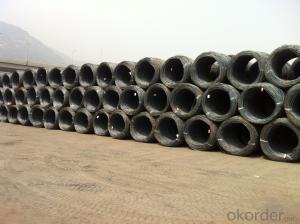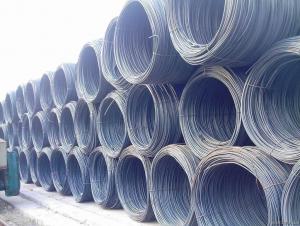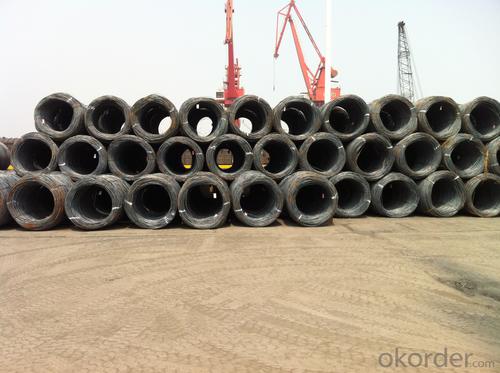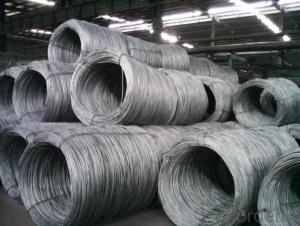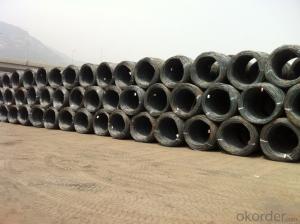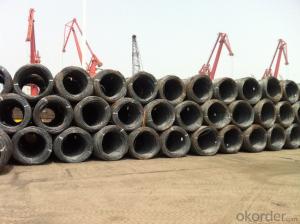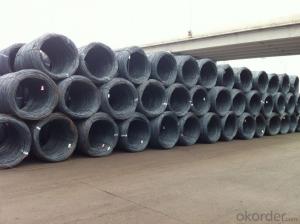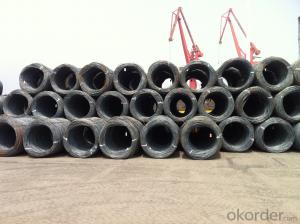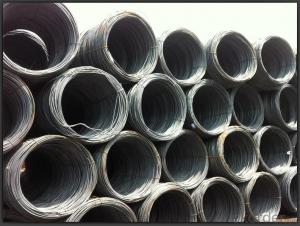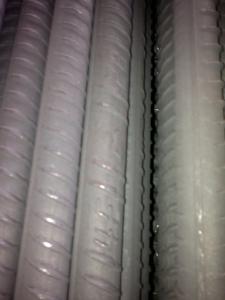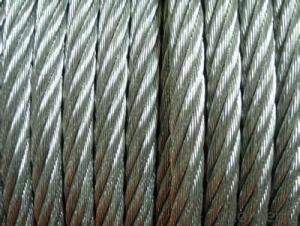SAE1008 Wire Rods with Competitive Price and Quality
- Loading Port:
- Tianjin
- Payment Terms:
- TT OR LC
- Min Order Qty:
- 25 m.t.
- Supply Capability:
- 20000 m.t./month
OKorder Service Pledge
OKorder Financial Service
You Might Also Like
Product Description:
OKorder is offering SAE1008 Wire Rods at great prices with worldwide shipping. Our supplier is a world-class manufacturer of steel, with our products utilized the world over. OKorder annually supplies products to European, North American and Asian markets. We provide quotations within 24 hours of receiving an inquiry and guarantee competitive prices.
Product Applications:
SAE1008 Wire Rods are ideal for structural applications and are widely used in the construction of buildings and the manufacturing, industries.
Product Advantages:
OKorder's Wire Rods are durable, strong, and resist corrosion.
Main Product Features:
· Premium quality
· Prompt delivery & seaworthy packing (30 days after receiving deposit)
· Corrosion resistance
· Can be recycled and reused
· Mill test certification
· Professional Service
· Competitive pricing
Product Specifications:
Manufacture: Hot rolled
Grade: SAE1006 – SAE1008
Certificates: ISO, SGS, BV, CIQ
Length: 6m – 12m, as per customer request
Packaging: Export packing, nude packing, bundled
Grade | Chemical Composition (%) | |||||
C | Mn | S | P | Si | B | |
SAE1006B | 0.03~O.07 | 0.32max | 0.045max | 0.040max | 0.30max | 0.0008min |
Mechanical properties | ||||||
Yield strength(N/mm2) | Tensile strength(N/mm2) | Elongation (%) | ||||
250-280 | 350-380 | ≥32 | ||||
Grade | Chemical Composition (%) | |||||
C | Mn | S | P | Si | B | |
SAE1008B | 0.10max | 0.3~0.50 | 0.050max | 0.040 max | 0.15max | 0.0008 min |
Mechanical properties | ||||||
Yield strength(N/mm2) | Tensile strength(N/mm2) | Elongation (%) | ||||
≥195 | 315-430 | ≥30 | ||||
FAQ:
Q1: Why buy Materials & Equipment from OKorder.com?
A1: All products offered byOKorder.com are carefully selected from China's most reliable manufacturing enterprises. Through its ISO certifications, OKorder.com adheres to the highest standards and a commitment to supply chain safety and customer satisfaction.
A2: Stainless does not "rust" as you think of regular steel rusting with a red oxide on the surface that flakes off. If you see red rust it is probably due to some iron particles that have contaminated the surface of the stainless steel and it is these iron particles that are rusting. Look at the source of the rusting and see if you can remove it from the surface.
Q3: What makes stainless steel stainless?
A3: Stainless steel must contain at least 10.5 % chromium. It is this element that reacts with the oxygen in the air to form a complex chrome-oxide surface layer that is invisible but strong enough to prevent further oxygen from "staining" (rusting) the surface. Higher levels of chromium and the addition of other alloying elements such as nickel and molybdenum enhance this surface layer and improve the corrosion resistance of the stainless material.
Images:
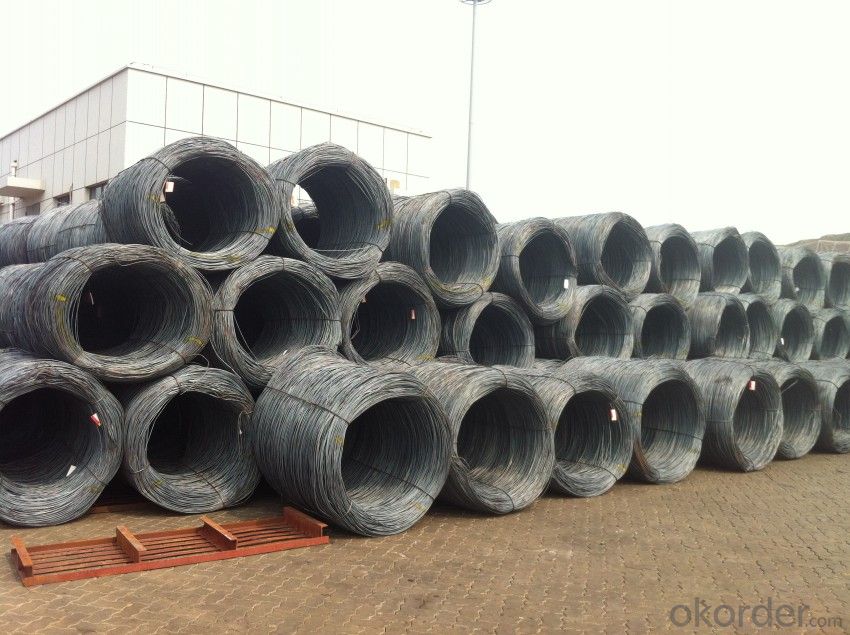
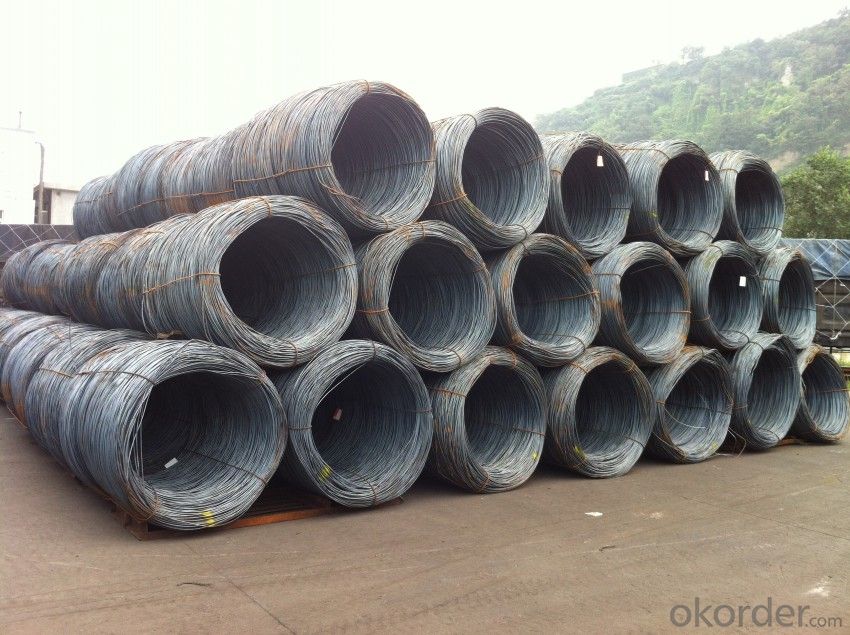
- Q: What are the different welding techniques used for steel wire rod?
- There are several welding techniques used for steel wire rod, including MIG (Metal Inert Gas) welding, TIG (Tungsten Inert Gas) welding, spot welding, and flash butt welding. Each technique has its own advantages and is suitable for different applications. MIG welding is commonly used for its speed and versatility, while TIG welding offers precise control and high-quality welds. Spot welding is used for joining thin wire rods, and flash butt welding is utilized for larger diameter wire rods. The choice of welding technique depends on the specific requirements of the project and the desired outcome.
- Q: What are the common industry best practices for steel wire rod suppliers?
- Some common industry best practices for steel wire rod suppliers include maintaining high quality standards, adhering to strict safety measures, ensuring efficient production processes, offering competitive pricing, providing excellent customer service, and staying up-to-date with industry trends and technological advancements. Additionally, suppliers may focus on sustainable practices, such as using environmentally friendly production methods and reducing waste and emissions.
- Q: What are the common applications of oil quenched and tempered steel wire rod?
- Oil quenched and tempered steel wire rod finds a wide range of applications across various industries due to its unique properties. Some of the common applications include: 1. Automotive Industry: Oil quenched and tempered steel wire rod is extensively used in the automotive industry for the manufacturing of various components such as suspension springs, engine valve springs, clutch springs, and transmission gears. The high strength and excellent fatigue resistance of this material make it ideal for these demanding applications. 2. Construction Industry: This type of steel wire rod is also widely used in the construction industry for the production of high-strength wire ropes, prestressed concrete wires, and reinforcement bars. The exceptional strength and durability of oil quenched and tempered steel wire rod make it suitable for withstanding heavy loads and extreme conditions in construction projects. 3. Manufacturing Industry: In the manufacturing sector, this steel wire rod is utilized for the production of fasteners, such as bolts, nuts, and screws, which require high strength and resistance to deformation. Additionally, it is used in the manufacturing of various machinery components, such as gears, shafts, and springs, where toughness and wear resistance are crucial. 4. Oil and Gas Industry: Oil quenched and tempered steel wire rod is extensively used in the oil and gas industry for applications such as wireline cables, well drilling components, and downhole equipment. The high tensile strength and corrosion resistance of this material make it suitable for withstanding the harsh conditions encountered in oil and gas exploration and production. 5. Aerospace Industry: This steel wire rod is also employed in the aerospace industry for the production of aircraft cables, landing gear components, and structural parts. The combination of high strength, fatigue resistance, and light weight makes it an ideal choice for these critical applications. Overall, oil quenched and tempered steel wire rod is a versatile material that finds applications in a wide range of industries due to its exceptional strength, durability, and resistance to deformation.
- Q: How is steel wire rod used in the manufacturing of wire rope turnbuckles?
- Steel wire rod is used in the manufacturing of wire rope turnbuckles as it serves as the primary material for the production of wire ropes. The wire rod is first drawn into wires of specific diameter and then twisted together to form strands, which are further twisted together to create the wire rope. This wire rope is then utilized to construct the core component of a turnbuckle, providing the necessary strength, durability, and tensioning capabilities required for various applications.
- Q: What are the common production processes for ruthenium-coated steel wire rod?
- The common production processes for ruthenium-coated steel wire rod include wire drawing, cleaning and degreasing, surface activation, electroplating or electroless plating with ruthenium, and post-treatment processes such as drying and quality control measures.
- Q: How is steel wire rod classified based on its chemical composition?
- Steel wire rod is classified based on its chemical composition into different grades or types. The classification is primarily determined by the levels of carbon and alloying elements present in the steel. Low carbon steel wire rod, also known as mild steel, typically contains a carbon content ranging from 0.05% to 0.25%. This type of steel is often used for general-purpose applications such as construction, automotive, and machinery. Medium carbon steel wire rod contains a higher carbon content, usually between 0.25% and 0.60%. This grade of steel offers increased strength and hardness, making it suitable for applications that require higher tensile strength, such as springs, wires, and cables. High carbon steel wire rod contains a carbon content of over 0.60%. This grade of steel is known for its exceptional strength and hardness. It is commonly used in the manufacturing of high-strength wires, guitar strings, and cutting tools. Alloy steel wire rod is composed of multiple alloying elements such as chromium, nickel, manganese, or molybdenum, in addition to carbon. These alloying elements enhance specific properties of the steel, such as corrosion resistance, heat resistance, or wear resistance. Alloy steel wire rod is often used in specialized applications such as automotive components, fasteners, and machinery parts. In summary, steel wire rod is classified based on its chemical composition, with varying carbon and alloying element levels determining its specific grade or type. This classification helps in selecting the appropriate steel wire rod for specific applications based on the desired mechanical properties and performance requirements.
- Q: How is steel wire rod used in the production of wire ropes for marine applications?
- Steel wire rod is an essential component in the production of wire ropes for marine applications. Wire ropes are widely used in the marine industry for various purposes such as mooring, towing, lifting, and rigging operations. Steel wire rod, which is typically made from high carbon steel, serves as the raw material for manufacturing wire ropes. The wire rod undergoes a series of processes to transform it into the final product. Firstly, the wire rod is drawn through a series of dies to reduce its diameter and increase its length. This process is known as wire drawing and is performed to achieve the desired size and strength of the wire rope. The drawn wire is then coated with a lubricant to enhance its corrosion resistance and reduce friction during the subsequent processes. Next, the lubricated wire is twisted together with other wires to form strands. These strands are then helically laid around a core wire to create the wire rope. The core wire can be made of steel or a synthetic material depending on the specific application requirements. The strength and durability of the wire rope depend on the quality of the steel wire rod used. The high carbon content in the wire rod provides the necessary strength and load-bearing capacity required for marine applications. Additionally, the wire rod's resistance to corrosion is crucial in ensuring the longevity and reliability of the wire rope in harsh marine environments. Furthermore, the mechanical properties of the wire rod, such as tensile strength and ductility, are crucial factors in determining the performance of the wire rope. These properties enable the wire rope to withstand heavy loads, resist deformation, and endure the dynamic forces encountered during marine operations. In conclusion, steel wire rod plays a critical role in the production of wire ropes for marine applications. Its high strength, corrosion resistance, and mechanical properties make it an ideal raw material for manufacturing wire ropes that can withstand the demanding conditions of the marine industry.
- Q: How are steel wire rods used in the production of electrical wires for conducting electricity?
- Steel wire rods are an essential component in the production of electrical wires for conducting electricity. These wire rods serve as the core material around which the electrical wires are manufactured. To begin with, the steel wire rods are carefully selected for their high tensile strength and conductivity properties. This ensures that the resulting electrical wires are strong, durable, and efficient in conducting electricity. The first step in the production process involves drawing the steel wire rods through a series of dies to reduce their diameter. This process is known as wire drawing and is used to achieve the desired thickness and shape of the electrical wire. By reducing the diameter, the wire becomes more flexible and easier to handle during installation. Once the wire rods have been drawn to the required size, they are then coated with a layer of insulating material. This insulation is crucial for preventing electrical leakage, short circuits, and protecting against external factors that may damage the wire. Common insulation materials used include PVC (polyvinyl chloride), XLPE (cross-linked polyethylene), or rubber. After the insulation process, the wire rods are further processed to include any necessary additional features. For instance, they may be twisted together to form multi-conductor cables, or copper strands may be added to enhance the wire's conductivity. These additional steps are performed based on the specific requirements of the electrical wire. Finally, the wire rods are wound onto spools or coiled into reels, ready to be used in various electrical applications. These can range from domestic wiring systems to industrial power distribution networks. In summary, steel wire rods play a vital role in the production of electrical wires. They provide the core material around which the wires are manufactured, ensuring strength, durability, and efficient conductivity. Through wire drawing, insulation, and other processing steps, the wire rods are transformed into high-quality electrical wires that are essential for conducting electricity safely and effectively.
- Q: How is steel wire rod used in the manufacturing of wire mesh gates?
- Steel wire rod is used in the manufacturing of wire mesh gates as the primary raw material. It is processed and formed into the desired shape to create the framework of the gate. The steel wire rod provides strength, durability, and stability to the gate, ensuring it can withstand various external forces and retain its shape over time.
- Q: What are the typical chemical compositions of steel wire rod?
- The typical chemical compositions of steel wire rods can vary depending on the specific grade and intended use of the wire rod. However, the most common elements found in steel wire rods are iron (Fe) and carbon (C). The percentage of carbon in steel wire rods usually ranges from 0.05% to 0.85%. In addition to iron and carbon, other elements are often added to steel wire rods to enhance specific properties. These elements include manganese (Mn), silicon (Si), sulfur (S), phosphorus (P), and sometimes chromium (Cr), nickel (Ni), and copper (Cu). Manganese is commonly added to improve the strength and hardenability of the wire rod. Silicon is added to enhance the steel's resistance to oxidation and improve its electrical properties. Sulfur and phosphorus are impurities that are usually restricted to low levels as they can negatively affect the steel's ductility and toughness. Chromium, nickel, and copper are sometimes added to steel wire rods to improve their resistance to corrosion or to enhance specific mechanical properties. These elements are commonly found in stainless steel wire rods, which are used in applications requiring high corrosion resistance. It is important to note that the exact chemical composition of steel wire rods may vary depending on the specific steelmaking process and any additional alloying elements or impurities present. Therefore, it is crucial to refer to the specifications or standards provided by the manufacturer to determine the precise chemical composition of a particular steel wire rod.
Send your message to us
SAE1008 Wire Rods with Competitive Price and Quality
- Loading Port:
- Tianjin
- Payment Terms:
- TT OR LC
- Min Order Qty:
- 25 m.t.
- Supply Capability:
- 20000 m.t./month
OKorder Service Pledge
OKorder Financial Service
Similar products
Hot products
Hot Searches
Related keywords

